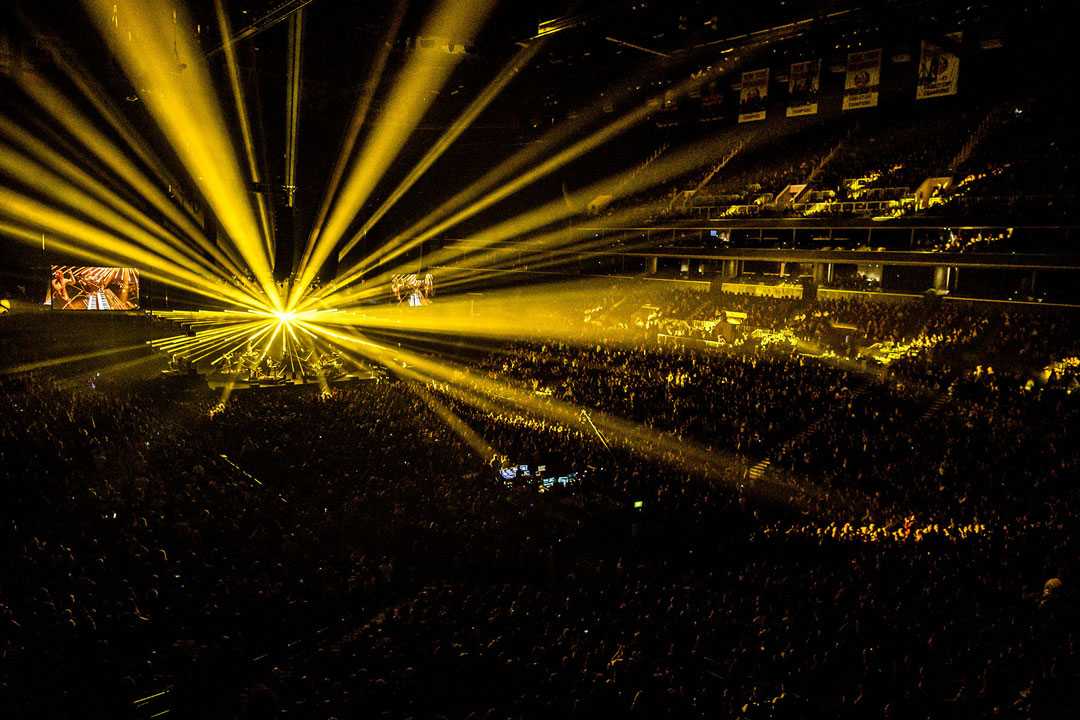Smoke, mirrors and MegaPointes for Bon Iver
- Details

Michael has worked with the band since 2012, following a chance backstage encounter a few years earlier with lead singer Justin Vernon. It’s been a fertile and stimulating partnership, for which they implicitly trust in his creative judgment.
He first encountered the Kinetic Lights winch system in 2017 while researching cool art projects for the Eaux Claires Festival in Wisconsin for which he was the creative director/ visual arts curator for all four years - 2015 to 2018 - that the event has run so far.
Bon Iver’s Justin Vernon and Aaron Dessner from The National are the main curators - for music and all aspects - of the entire festival.
Christopher Bauder and WHITEvoid - the company presenting the project side of his work – had a lot more experience of utilizing the kit, and both Justin Vernon and Bon Iver’s production manager James Dean were also onboard.
The 3D geometry that defined the band’s touring lighting rig was created by five identical overhead chevron trusses comprising 32ft long wings connected by a 90-degree corner block, which resembled a diamond from the audience perspective and mirrored a diamond-shaped layout of the band risers onstage down below . . . with no one on the central plane.
The 25 custom diamond-shaped Kinetic Lights LED-outlined mirrors, each suspended on three of their proprietary winches, flew below the chevrons - in five vertical rows of five - able to move up / down / pan / tilt in any direction, controlled by their own KLC control software, developed specially for this purpose.
Then there were two grids of MegaPointes at the core of the rig. A row of 21 fixtures formed a U-shape around the winches with another 21 echoing the same positions on the floor, and all these fixtures were mapped onto the mirrors. The other seven MegaPointes were on the floor aligned directly below certain mirrors.
All the flown elements were sub-hung from a mothergrid installed into the arenas to ensure millimeter precision for each gig.
Lighting - for the MegaPointes plus a number of other moving lights and LED battens and strips - was controlled via a grandMA2 console which was also triggering the KLC computer for the winch movements.
Lighting equipment, all the associated rigging and the set risers were supplied out of rental specialist Clearwing’s Milwaukee shop, with the mirrors and winches a rental from Kinetic Lights in Germany.
(Jim Evans)
















